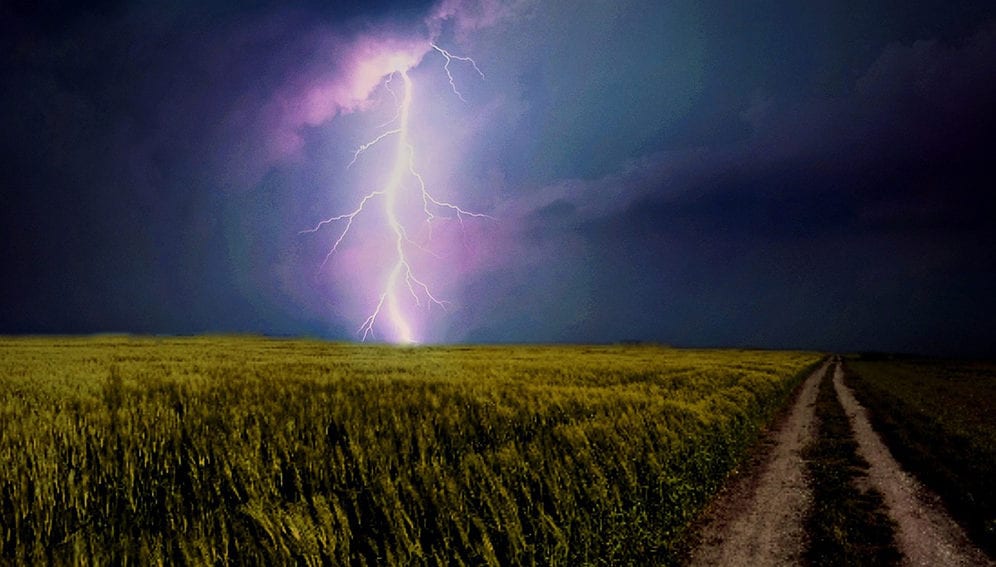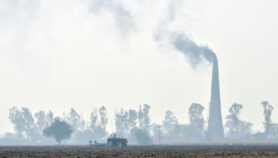18/12/19
Lightning strikes add to farmers’ woes in Bangladesh

By: Saleem Shaikh
Send to a friend
The details you provide on this page will not be used to send unsolicited email, and will not be sold to a 3rd party. See privacy policy.
[ISLAMABAD] Lightning incidences peak in disaster-prone Bangladesh during the March to June pre-monsoon season when agricultural activity is also most intense, resulting to high fatalities among farmers, a new study finds.
Of the 1,434 lightning-related deaths recorded in Bangladesh during 2013—2017, an average of 1.73 deaths per day occurred in the pre-monsoon season and 0.71 during the June—October monsoon, with small averages in other seasons, says the study published December in the International Journal of Disaster Risk Reduction.
“Communicating timely meteorological warnings, particularly to farmers, through channels such as radio, mobile phone SMS, mosques, churches, etc. can help reduce the number of lightning-related fatalities and injuries”
M. Rafiuddin, Bangladesh University of Engineering and Technology
The agriculture sector accounts for half of all lightning-related fatalities. Lightning fatalities were found to be most frequent in May, and especially during the mornings and afternoons, when farmers are most likely to be tending their fields.
Based on the 37.2 million strikes recorded during the 2013—2017 study period by the Vaisala Global Lightning Dataset GLD360 network — which provides real-time lightning data for accurate and early detection and tracking of severe weather — lightning events were found most frequent in the northeast of the country from mid-April through early June at all hours of the day.
Lightning occurrence are at the lowest ebb during the monsoon and post-monsoon months, which happens to be when farming activities are also less resulting to lower deaths especially between October to March, says M. Rafiuddin, a study author and professor of physics and meteorology at the Bangladesh University of Engineering and Technology.
The researchers say government agencies have so far not taken adequate initiatives to gather data on lightning-related deaths and have generally considered them to be unimportant in a country known for frequent and large-scale natural disasters.
Rafiuddin recalls that the Bangladesh government started collecting lightning-related data only after 89 people were killed by strikes on 12 – 13 May 2016. In June that year 79 people were killed by lightning bolts in neighbouring India, a country which records 2,000 such deaths on average, annually.
Broad estimates suggest that some 24,000 lightning deaths occur annually across the world, but no efforts have been made to collate figures according to Vaisala.
“Floods and tropical cyclones account for most of the deaths and damage in Bangladesh, which is why localised fatalities from thunderstorms, lightning, hail and tornadoes have remained less likely to be reported,” says Rafiuddin. “The present study endeavours to address this gap.”
“Communicating timely meteorological warnings, particularly to farmers, through channels such as radio, mobile phone SMS, mosques, churches, etc. can help reduce the number of lightning-related fatalities and injuries,” Rafiuddin tells SciDev.Net.
The study findings can also help agriculture extension departments to roll out lightning-sensitisation and public awareness programmes in collaboration with Bangladesh Meteorological Department (BMD) to help vulnerable communities, the study researchers say.
“Temporal and spatial studies may significantly help us plug knowledge gaps and pave the way for more effective evidence-based forecasting and prevention measures,” says Shamsuddin Ahmed, BMD director.
“But as the atmosphere warms as a result of climate change, and holds more moisture, deadly lightning strikes are happening more frequently turning it into one of country’s deadliest disasters,” Farukh adds, citing the deaths of 360 people from lightning in Bangladesh last year, more than by floods or cyclones.
To protect farmers and minimise fatalities, he suggests measures such as planting taller trees, including date palm, coconut and betel nut, and installing tall poles that can attract lightning strikes and away from people.
This piece was produced by SciDev.Net’s Asia & Pacific desk.













